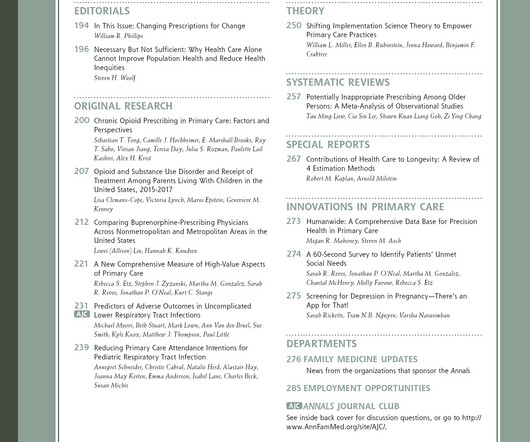Comprehensive and Focus Practice changes in the Family Physician Workforce in Ontario:1993-2022 [Population health and epidemiology]
Annals of Family Medicine
NOVEMBER 20, 2024
Context: Comprehensive primary care is the foundation of an effective healthcare system but has been on the decline as more family physicians pursue careers in focused practice. From 1993 to 2022, the proportion of comprehensive primary care physicians decreased from 71.1% in 2009/2010 and ending at 20.4% in 2021/2022.











Let's personalize your content